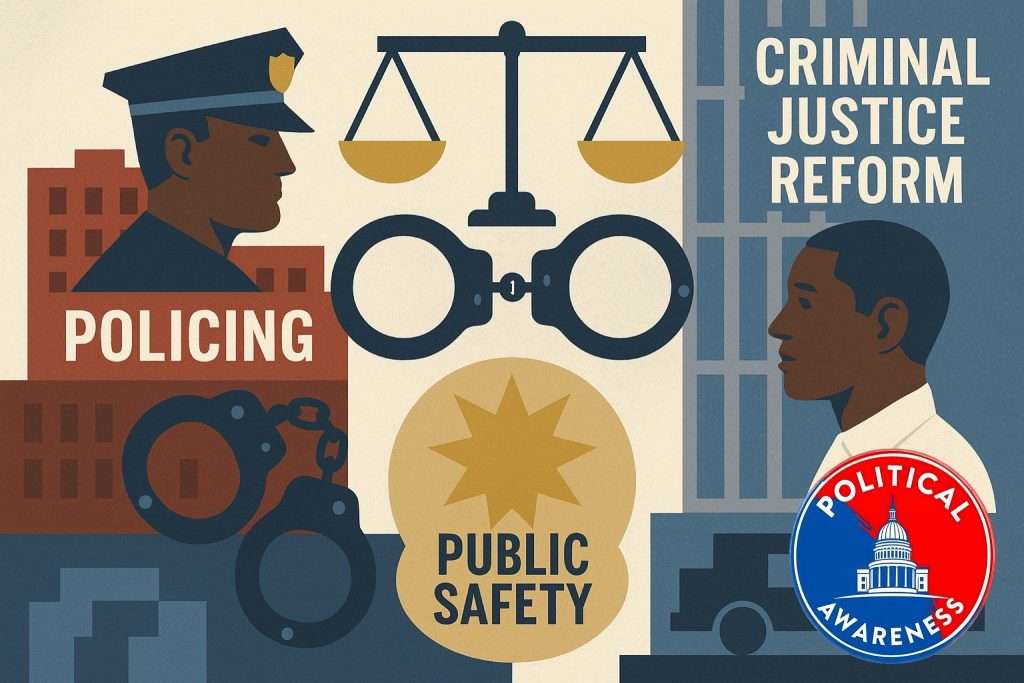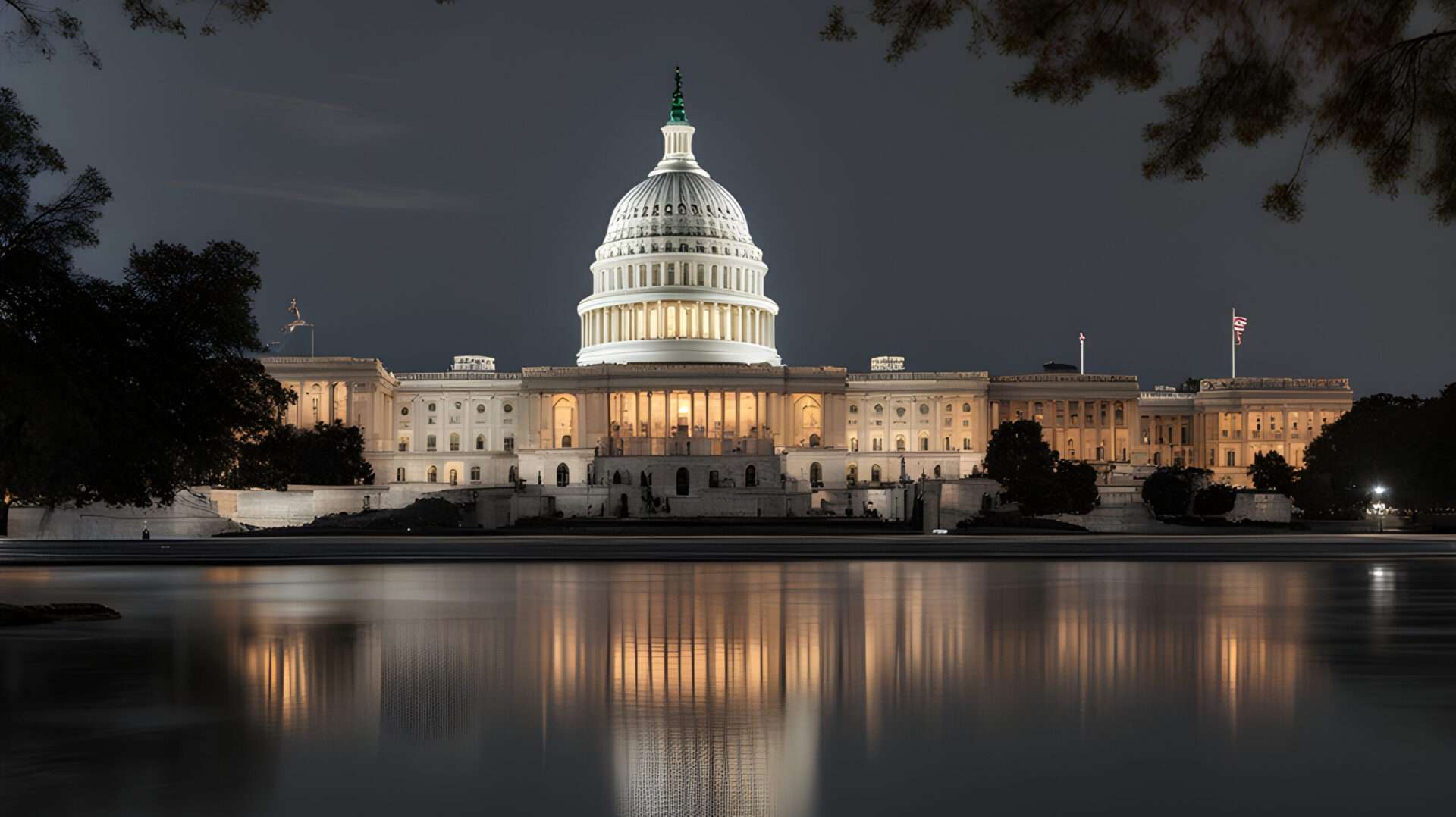Note: Political Awareness’s published communication is never authorized by any candidate or their committees.
Policing, Criminal Justice Reform, and Public Safety
The health of a democracy depends not only on the letter of its laws but on the trust, people place in those who enforce them. In 2025, America finds itself wrestling with a criminal justice system that has begun to evolve yet still carries the scars of uneven enforcement, racial disparities, and fractured public confidence. The question is no longer whether reform is necessary, but whether reforms can restore legitimacy and a shared sense of justice.
Public safety remains at the center of the conversation. Crime rates in many cities have declined from pandemic-era highs. But headlines about violence and tragic police encounters continue to dominate public perception. For many communities, particularly communities of color. Safety is not measured only by the absence of crime but by the presence of fairness. A neighborhood may see fewer robberies yet still feel unsafe if its residents believe they could be targeted unfairly in a traffic stop or court proceeding.
Reform Efforts and Their Challenges
Reform efforts have focused on data-driven accountability. Body cameras, revised use-of-force policies, and independent review boards have brought new transparency. Prosecutors in several jurisdictions are experimenting with diversion programs, seeking alternatives to incarceration for nonviolent offenders. Bail reform has reduced the number of people jailed simply for being poor. These are real shifts, but their uneven application fuels suspicion. When reforms are implemented in one county but absent in the next, justice begins to look arbitrary. Arbitrary justice is the enemy of legitimacy.
Trust in the system is not built only in police precincts or courthouses; it is shaped in daily interactions. When a mother watches her son stopped and questioned for the third time in a month while others pass freely. She learns to view the law not as impartial but as selective. When a victim of assault sees her case languish for years while high-profile defendants secure quick resolutions, she sees a system that values some voices more than others. The perception of bias becomes as damaging as bias itself.
The Impact of Perceived Injustice on Public Safety
This appearance of justice being tainted undermines public safety. Research consistently shows that when people trust the system, they are more willing to cooperate with police, testify in court, and comply with the law. Without trust, even well-intentioned reforms cannot deliver their full impact. Public safety falters not simply because of crime but because legitimacy — the social contract that makes law enforcement possible — erodes.
Community policing remains one of the most discussed but inconsistently applied reforms. Where done well, officers build relationships beyond enforcement, attending neighborhood meetings, walking beats, and engaging with residents as partners rather than overseers. But in many cities, staffing shortages and political pressure for immediate crime reduction have narrowed policing to its most transactional form: respond to the call, write the report, move on. The broader work of trust-building suffers.
Crises in Courts and Corrections
Courts and corrections face their own crises of legitimacy. Mandatory minimums, unequal sentencing, and overcrowded prisons fuel the impression that justice is less about rehabilitation or fairness than about warehousing people. Reentry programs for those leaving prison are chronically underfunded, leading to cycles of recidivism that convince communities the system is designed to punish indefinitely rather than reintegrate. These outcomes deepen cynicism on all sides.
Still, there are paths forward. Greater investment in transparency — from publishing stop-and-search data to making court outcomes accessible and comprehensible — can expose disparities and pressure systems to improve. Expanding mental health crisis response teams can reduce unnecessary confrontations between police and vulnerable populations. Prosecutor accountability, including elected prosecutors who campaign on reform platforms, shows that public demand can reshape institutions.
Yet the broader challenge remains cultural as much as structural. Policing and criminal justice reform cannot succeed if they are framed solely as concessions to activists or cost-saving measures. They must be seen as fundamental to democracy’s survival. A justice system that appears tainted corrodes not just safety but citizenship itself. People lose faith not only in police or courts but in the broader promise of equality under law.
The Stark Choice in 2025
In 2025, the choice before the country is stark. We can pursue reforms piecemeal, hoping small changes will be enough to quiet criticism. Or we can confront the deeper issue. That legitimacy is as important as enforcement, and that public safety cannot thrive without public trust. Justice must not only be done; it must be seen to be done — consistently, transparently, and fairly.
The measure of success will not be the number of new policies passed, or the dollars saved in budgets. It will be whether a resident, no matter her race, income, or zip code, can believe that the system values her life equally. Only then will the balance between safety and justice hold.


Leave a Reply